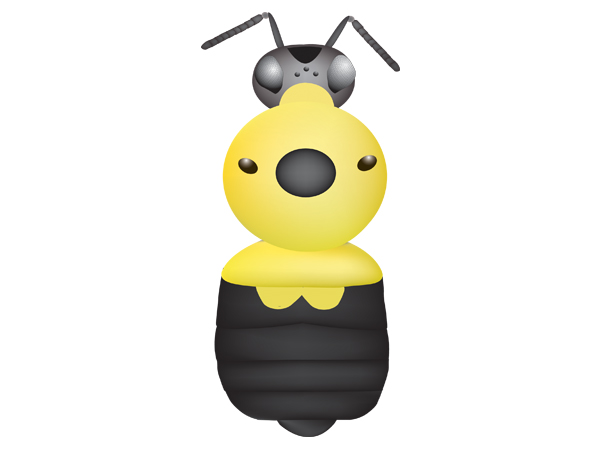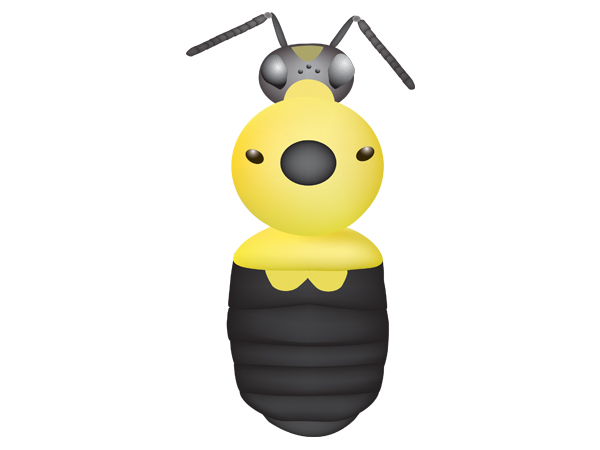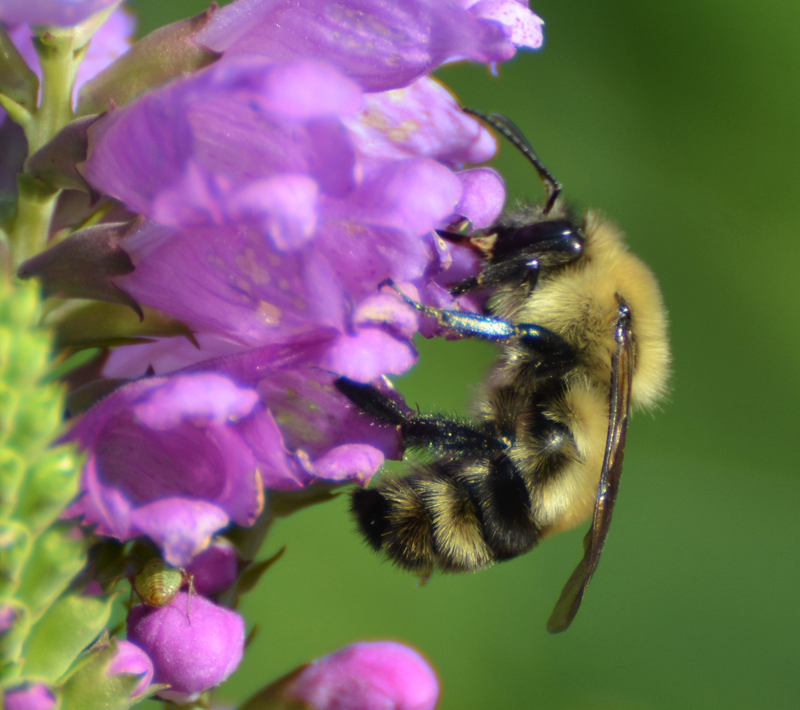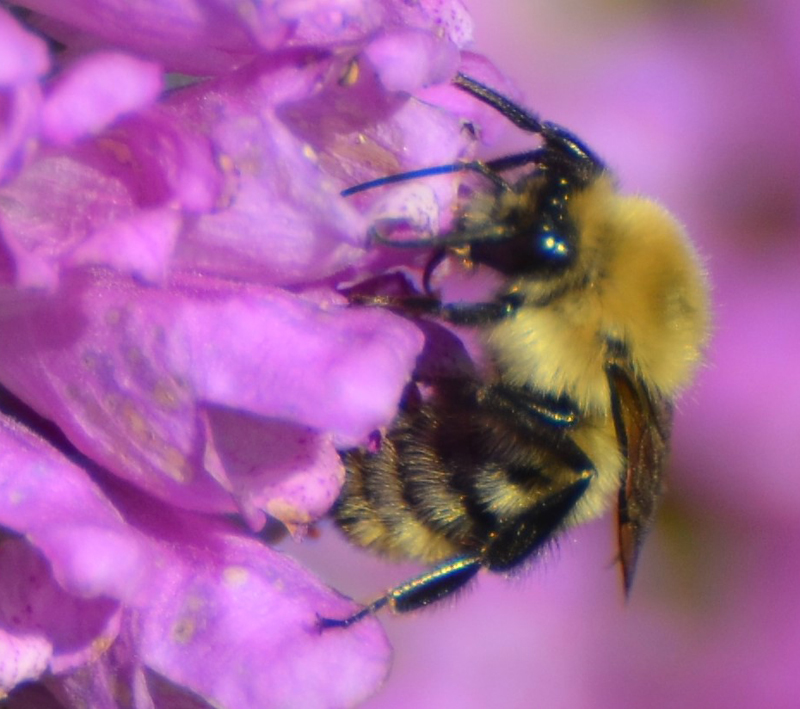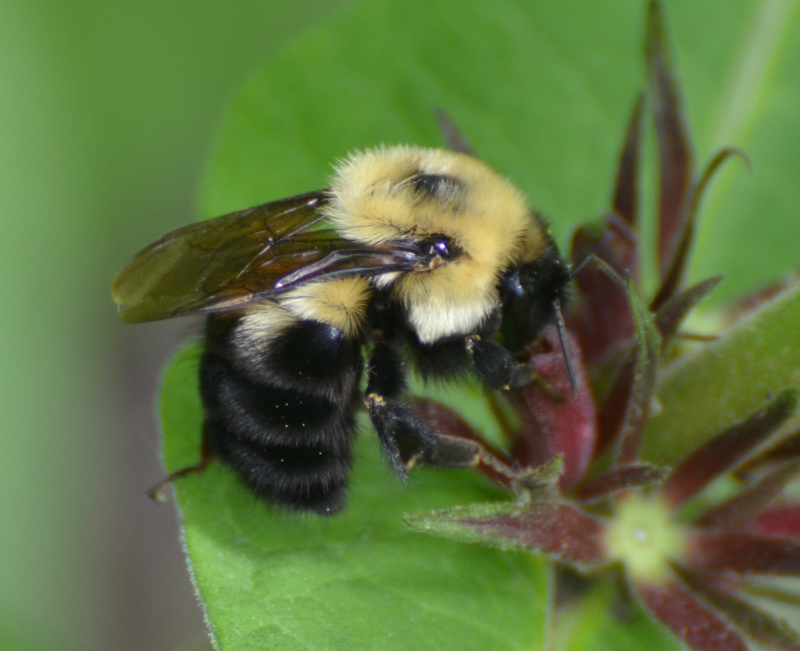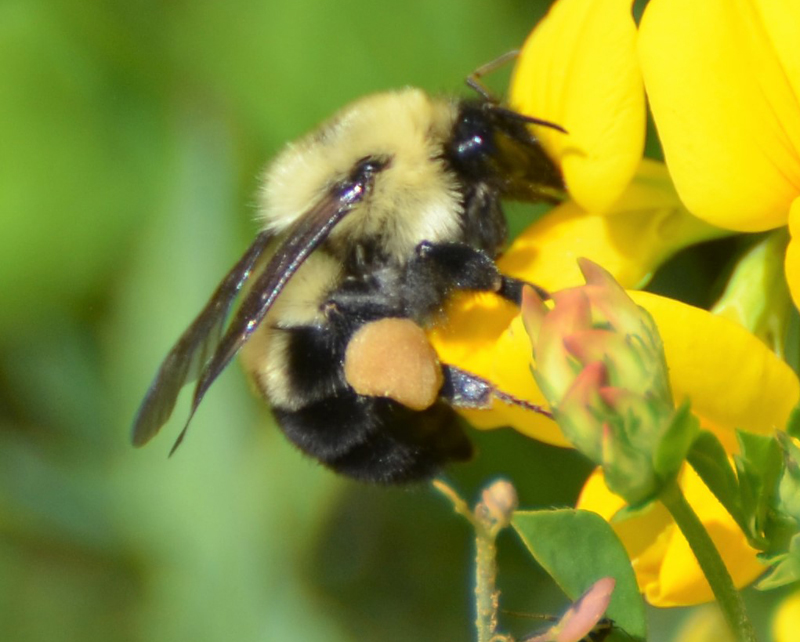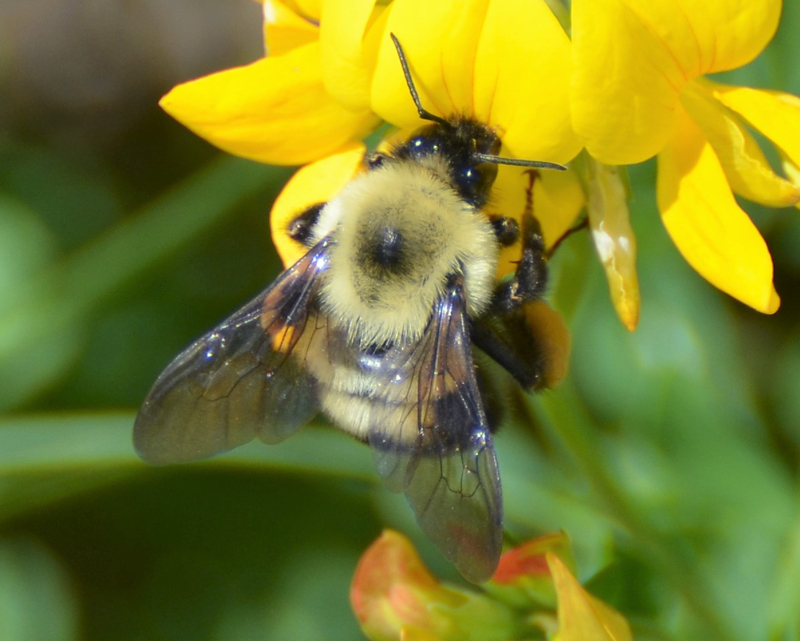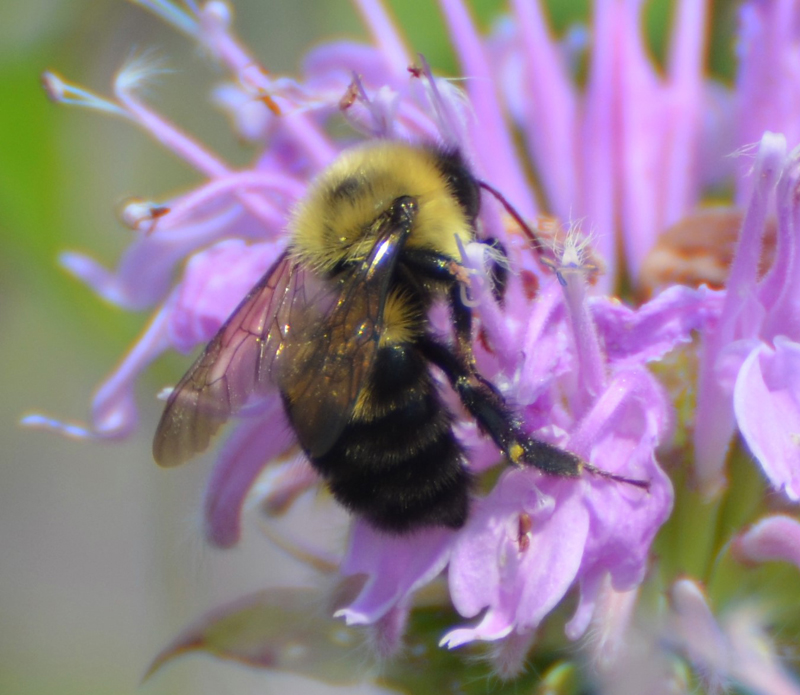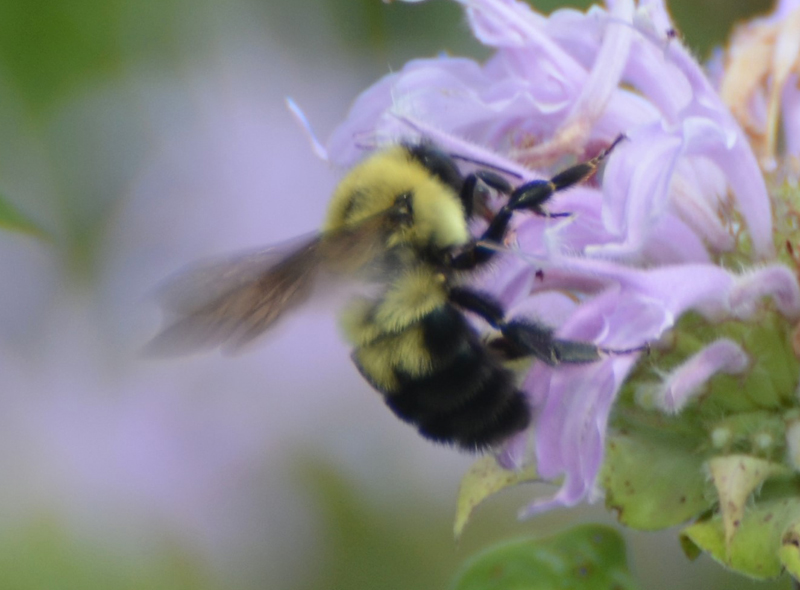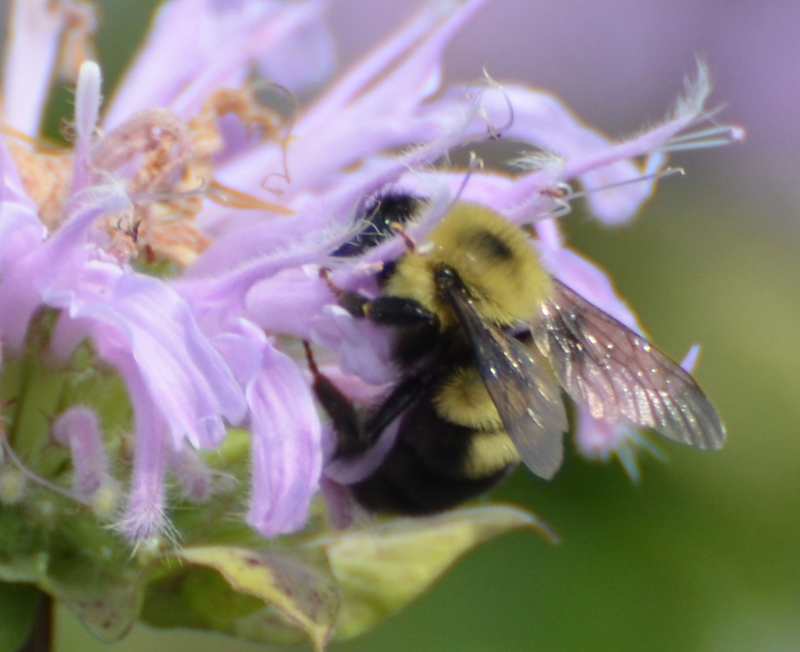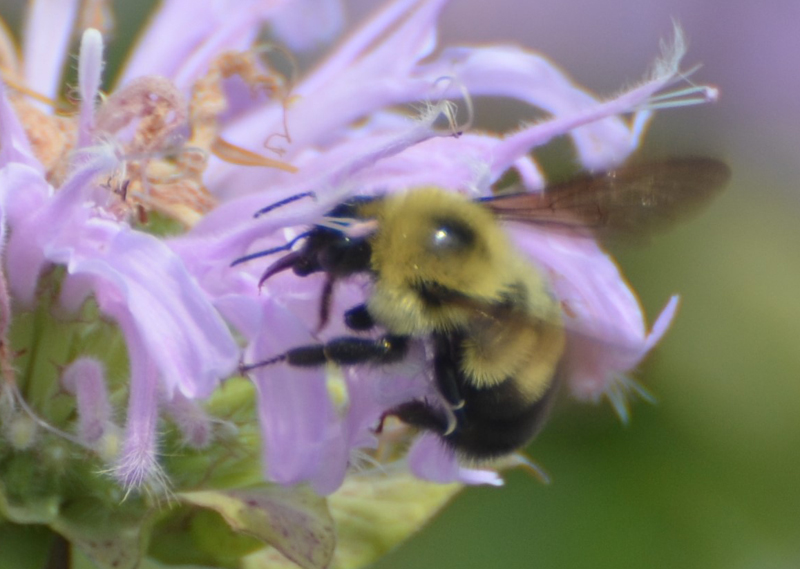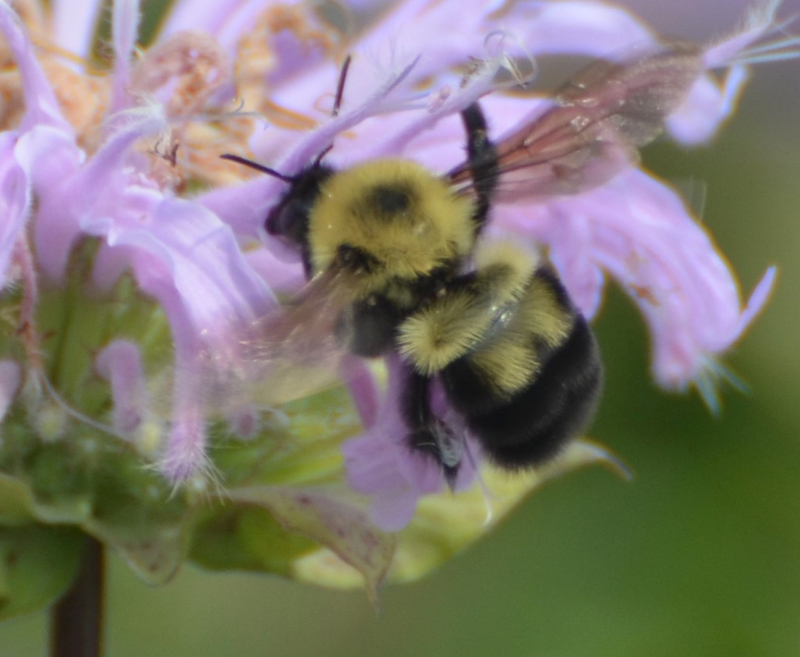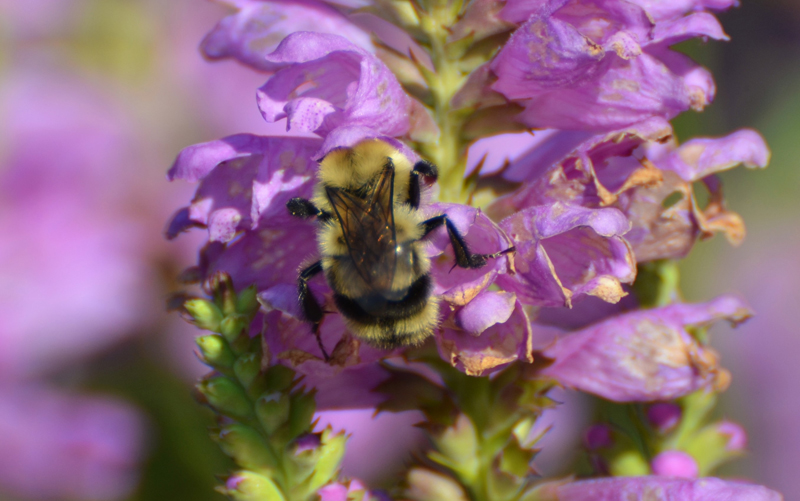
Status-Global/State:
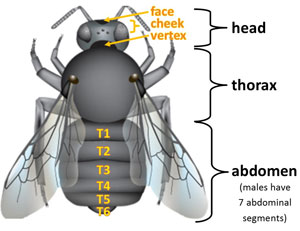
Identification:
- Worker – Face black and vertex yellow. Thorax yellow with a black spot. Abdominal segments T1 yellow, T2 usually yellow with a yellow "W" in the middle surrounded by black, T3-T6 black.
- Queen/gyne – Similar to workers, but are larger and appear earlier in the season.
- Male – Face yellow or intermixed and vertex yellow. Thorax yellow occasionally with a black spot. Abdomen color pattern is highly varied (see photos), but T1 and center of T2 are typically yellow.
- Other distinguishing features – Hair long and uneven.
Similar Wisconsin Species:
Similar bumble bee species in Wisconsin are the common eastern bumble bee (B. impatiens), and the brownbelted bumble bee (B. griseocollis) (Colla et al. 2011, Williams et al. 2014).
Description of Habitat/Range:
Known habitats include woodlands, urban parks, old fields, and gardens (Williams et al. 2014). Nests have been found underground, in cavities, and on the ground surface (Williams et al. 2011).
Nectar Plants
The twospotted is a medium-tongued species (Williams et al. 2014). Nectar plants include Cirsium (thistles), Campanula, Hypericum (St. John's wort), Lonicera (honeysuckles), Melilotus (sweet clovers), Monarda (bee balms), Prunus (plums/cherries), Rhododendron, Rosa, Rubus (blackberry), Solidago (goldenrods), Tilia, Trifolium (clovers), Vaccinium (blueberry), Vicia (vetches) (Williams et al. 2014, Colla et al. 2011).
Data from verified B3 observations [updated 2/28/2024].
Flight Season:
Known to emerge early. In Wisconsin, observations have been reported mostly between May and September.
Literature Cited:
Colla, S., Richardson, L. and Williams, P. (2011) Bumble Bees of the Eastern United States. A product of the USDA Forest Service and the Pollinator Partnership with funding from the National Fish and Wildlife Foundation.
Hatfield, R., Jepsen, S., Thorp, R., Richardson, L. & Colla, S. 2014. Bombus bimaculatus. The IUCN Red List of Threatened Species 2014: e.T44937719A69000240.
Williams, P.H., Thorp, R.W., Richardson, L.L. and Colla, S.R. (2014) The Bumble bees of North America: An Identification guide. Princeton University Press, Princeton.
